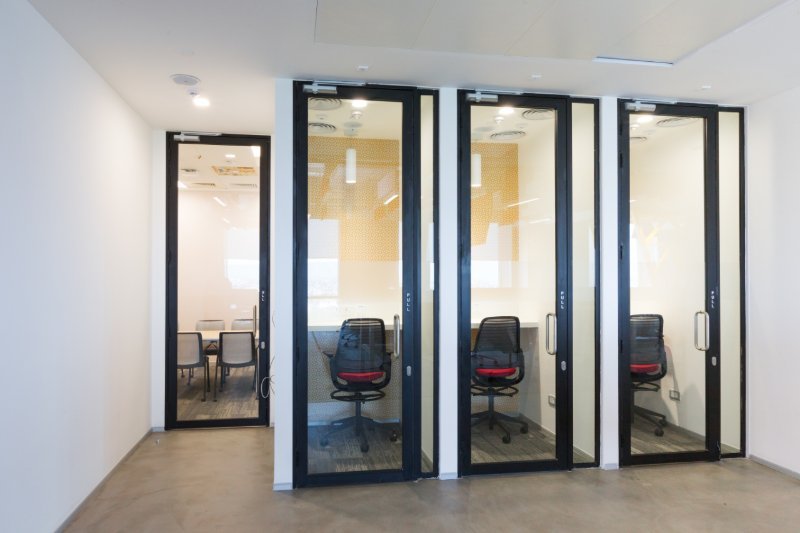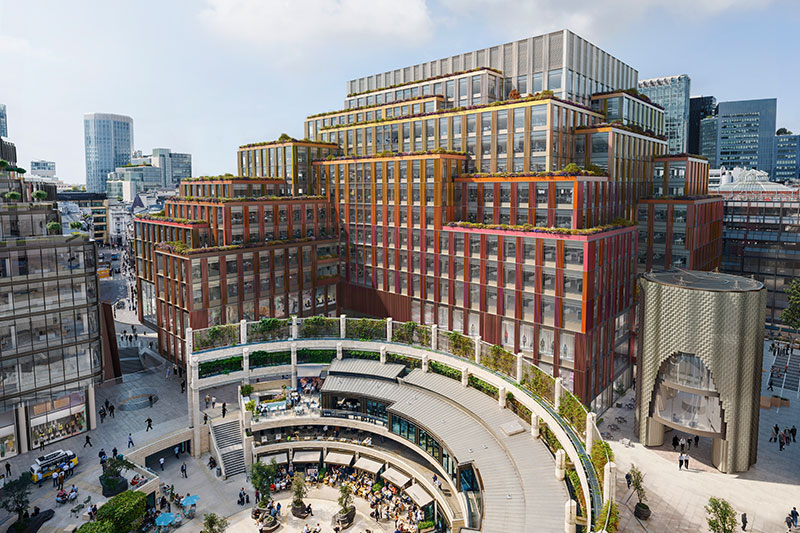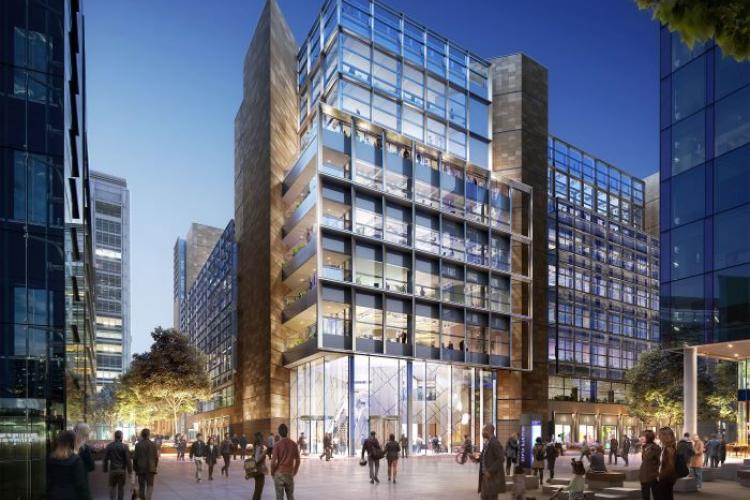High-Performing Buildings – August's Roundup
As building owners look to attract employees back to workplaces with enhanced amenities and flexible office space, there is renewed interest in high-performance buildings...
Read Full Article
FMs and building managers must measure and demonstrate a building’s performance through various standards and accreditations – but where to start?
Navigating the sheer amount of building performance standards on offer in the UK can be challenging. Accreditations exist for everything from indoor air quality, energy efficiency to the implementation of smart technology.
Here is a short introduction to just some of the standards available as a starting point for commercial properties.
One of the most established standards in building health is the WELL Building Standard.
The standard is based upon the notion that buildings should be developed with people’s health and wellness at the centre of design.
The WELL Building Standard takes a holistic approach to health in the built environment addressing behaviour, operations and design.
Grounded in a body of medical research that explores the connection between buildings and the health and wellness impacts on its occupants. WELL Certified™ spaces can help create a built environment that improves the nutrition, fitness, mood, sleep patterns and performance of its occupants.
WELL measures attributes of buildings that impact occupant health by looking at seven factors, or concepts:
Examples of buildings that have achieved excellence in the WELL Building Standard are the iconic Empire State Building, JLL India's Global Technology Centre in Bengaluru, Cundall’s London office at One Carter Lane and The Porter Building in Slough.

Picture: a photograph from the interior of JLL India's Global Technology Centre in Bengaluru, showing individual meeting booths
A new standard for measuring indoor environment quality is the BS 40101 Building Performance Evaluation, which will be published later this year.
The new standard will provide guidance on efficient and suitable lighting, heating, ventilation, and minimising the unwanted and harmful effects of air and noise pollution to improve the health and wellbeing of occupants.
The new standard may also provide benchmarks for a wellbeing performance rating that could be applied to any building.
The Building Engineering Services Association said the standard should reflect the latest thinking from around the world including new air quality guidance about to be produced by the World Health Organisation (WHO) and the European Union, which is expected to set new air quality targets this year.
Frise added that any measures proposed should also be specific to conditions inside buildings:
“The government’s primary focus tends to be on outdoor pollution, but IAQ is a very different challenge, and it can often be many times worse than the conditions around the building,” he said.
“Our members repeatedly encounter the serious problems caused by poor IAQ and have good practical experience of what it takes to fix it. We have a duty to turn buildings into ‘safe havens’ that protect people from the worst effects of airborne viruses and particulate matter so everyone can enjoy better health and wellbeing.”
Building standards can not only be applied to completed properties, but also become part of the design process. Design for Performance is one of these, part of the NABERS UK rating scheme, administered by BRE, in partnership with NABERS and the Better Buildings Partnership.
New office developments and major refurbishments in the UK will be able to formally register under the Design for Performance framework, helping developers ensure that projects deliver against their design intent and overcome the well-evidenced performance gap between design and operation. This is achieved by requiring project teams to target an operational NABERS Energy rating during the project design and verify it once the building is occupied.
Since its official launch in November 2020, project registration has only been open to a selection of leading commercial property developers who funded the development of the scheme, with 14 projects representing over 350,000m2 of office space already registered.
Any project is now able to register by signing a Design for Performance Agreement with a target NABERS Energy rating of 4.0 stars or above. By signing up, projects can promote their target rating to investors, occupiers and wider stakeholders, demonstrating the sustainability ambitions of the project and its alignment with net zero carbon targets.
Projects are then required to design the building to operate at the target rating, using advanced simulation to test the design against a range of expected operational conditions. The framework spans a number of years and remains in effect until the building has received its NABERS Energy Rating, after 12 months of operation.
Developments that are pioneering Design for Performance include 1 Broadgate, London, 2 Finsbury Avenue, London and 4 Angel Square, Noma Manchester.

Picture: an artist's impression of 1 Broadgate. Image Credit: British Land
BREEAM is an international scheme that provides independent third-party certification of the assessment of the sustainability performance of individual buildings, communities and infrastructure projects.
The main output from a certified BREEAM assessment is the rating. The BREEAM ratings range from Acceptable, to Pass, Good, Very Good, Excellent to Outstanding and it is reflected in a series of stars on the BREEAM certificate.
BREEAM measures sustainable value in a series of categories, ranging from energy to ecology. Each of these categories addresses the most influential factors, including low impact design and carbon emissions reduction; design durability and resilience; adaption to climate change; and ecological value and biodiversity protection.
Examples of BREEAM Outstanding buildings include 1 Triton Square at Regents Place, Level 1, 80-100 Victoria Street, London and The New Horten Upper Secondary School (Horten VGS) in Norway.

Picture: 1 Triton Square at Regents Place.
By certifying your building with a Smart Building Certification you can share how you are improving your properties to be smarter, healthier, more sustainable, and more productive.
Smart Building Certification offers a “Core & Shell” certification for the build phase, and “In Operation” for when buildings are in use. This looks at how the technical infrastructure is being used to optimize, improve, and manage the efficiency of the building. This certification is useful for property managers, owners, and tenants to maximize what the building and the technical infrastructure have to offer.
Southworks by MiddleCap in London is the first building to be evaluated in the UK using the Smart Building Certification framework. Its technology-first approach and number of integrated design and management features create a responsive and productive environment that enhances user’s wellbeing.
Picture: a photograph of a glass-fronted building
Article written by Ella Tansley | Published 02 July 2021
As building owners look to attract employees back to workplaces with enhanced amenities and flexible office space, there is renewed interest in high-performance buildings...
Read Full ArticleBloom Clerkenwell has become the first commercial building in the UK to achieve the highest accreditations for wellbeing, sustainability and digital...
Read Full ArticleA £400 million development finance facility to fund 105 Victoria Street means building work will commence this year, with Skanska as the main contractor. Welput,...
Read Full ArticleHolbein Gardens, located at 7 Holbein Place in the heart of London’s Belgravia, will lead the way for future schemes on the road to achieving net-zero...
Read Full Article11 Belgrave Road in London Victoria has become the UK's first building to achieve a NABERS UK Design for Performance 5.5-star rating for building...
Read Full ArticleThree green building authorities, including the Building Research Establishment, have formed an industry-first, international alliance to raise awareness of sustainable...
Read Full ArticleThis month’s high-performing buildings roundup features one of the world’s tallest buildings, a futuristic stackable car park and a new development on Pall...
Read Full ArticleThe Building Controls Industry Association has published two new technical guides that cover building assessment schemes and regulations for commercial buildings. The...
Read Full ArticleThis month’s roundup of high-performing buildings looks at offices that have achieved industry certifications, such as WiredScore Platinum certification,...
Read Full ArticleA new commercial building at 135 Park Street in Southwark, London will provide 131,900 sq ft of office space, 12,900 sq ft of affordable workspace, and a further 1,500 sq...
Read Full Article